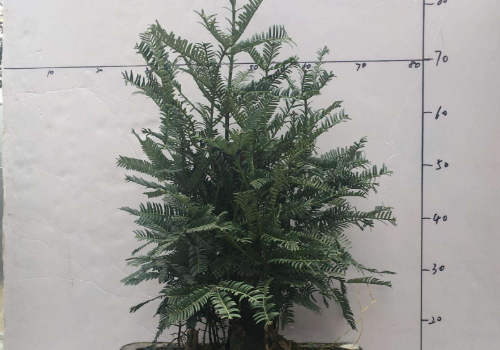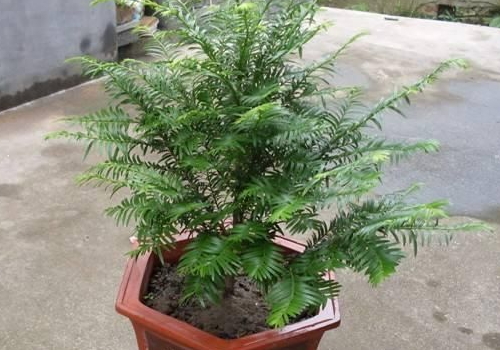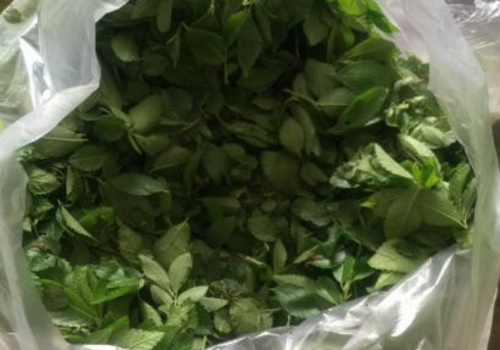How to trim the yew bonsai and when to prune
Yew bonsai, I believe many people have seen, many families have bought to raise. How to trim the yew bonsai? When to trim?
How to cut down the trees:
1. Sprouting:
After many yew plants are transplanted and set, many buds sprout on the grafted seedlings.
2. Pickling:
Taxus bonsai branches grow unbalanced, strong and weak. Conifer species due to some reason caused by double-headed, multi-headed, etc., can be used to remove the branch growth point to inhibit its growth, to achieve the purpose of balancing the branch potential.
3. Shortening:
Cutting off a part of an annual branch is called truncation. There are four kinds of truncation: light truncation, medium truncation, heavy truncation and extremely heavy truncation.
All truncation methods may be used on a plant, such as stone and kernel flowering shrubs, peach, plum, cherry, apple and pear.
The branches of the main branch are medium and short, the lateral branches are light and short, and the open bore is heavy or extremely short. Like hanging branch seedlings, such as dragon claw locust, hanging branch peach, hanging branch elm, hanging branch apricot and other branches drooping, generally only one method is more, that is, heavy short, cut off 90% of the branches.
Stimulate the germination and growth of upward-growing branches to form a round-headed crown. If light truncation is used, the branches will become weaker and weaker, and the crown will not form.
4. Thinning branches:
Cutting off all branches or groups of branches from their base is called thinning or pruning. Thinning may be annual branches or perennial branches. The role of thinning branches is to enhance the growth potential of the remaining branches, because of their relative expansion of nutrient area, which is conducive to their growth and development. However, the growth potential of the whole tree was weakened and the growth amount was reduced. Thinning branches after less branches, improve the crown ventilation, light transmission conditions, branches evenly distributed, reasonable control, for flowers, fruit species, conducive to the formation of flower buds, flowering.
5, pull branches:
Pulling branches is to use the method of pulling, so that branches or large branch groups change the original direction and position, and continue to grow, such as coniferous spruce, pine and so on. For some reason, the branches in a certain direction are damaged or missing. In order to make up for the lack of branches, the two branches can be pulled to the missing branches to make up for the defects of the original crown. Otherwise, it will become a waste seedling. Pull branch with the most or flower, fruit tree big seedling cultivation.

When to cut down the trees:
1. According to the growth and dormancy period of Taxus bonsai, it is divided into growth period pruning and dormancy period pruning, also called summer pruning and winter pruning.
Summer shear is April to October, winter shear October to April. In the south, the fourth grade is not obvious, it is called summer scissors. Different trees and species have different biological characteristics, especially phenology, so the specific pruning time of a tree species should be determined according to its phenology, bleeding, wind chill, freezing injury and other specific analysis.
3. Generally deciduous tree species are suitable for winter pruning, serious bleeding should be cut early or cut after bleeding, evergreen tree species are suitable for winter pruning and summer pruning.
Well, about yew bonsai pruning time and method of introduction here, little friends understand it.
How to trim the yew bonsai
Time to trim yew bonsai
According to the yew bonsai growth period and dormant period to carry out different pruning. The pruning of growth period is generally from April to October, and the pruning of dormant period is generally from October to April of the following year. At the same time, according to plant phenology, bleeding, wind chill, freezing injury and other specific analysis.
How to trim the buds of yew potted plants
After transplanting and planting, yew will grow a lot of new buds. Some buds should be wiped off properly to avoid too much nutrient consumption and promote better growth of yew potted plants.
pinching
In order to achieve balanced branch potential, we should adjust the unbalanced growth, double-headed, multi-headed and so on of Taxus bonsai branches by removing the growth points of branches.
stub
Cut off a part of the annual branch, and the short section has light short section, medium short section, heavy short section and heavy short section. Generally, a plant may use these four methods, but it should also be selected according to different situations.
thinning branches
Thinning means cutting off all branches or groups of branches from their base. It can be a one-year-old, or a multi-year branch. Thinning branches is beneficial to make the preserved branches grow better, improve the ventilation and light transmission conditions of the crown, and is conducive to the formation of flower buds and flowering.
branch bending
In the process of pruning yew bonsai, we often find that because the angle of the main branch is too small, only the method of construction can achieve the purpose of opening the angle, then we must use the method of pulling the branch. The yew potted plant branches want to open around, the main branch angle to 70 degrees for the best. This can effectively dry the space occupied by the crown and slow down the growth rate of the tree.
incised wound
Remove part of bark or xylem with knife or scissors somewhere on the branches or branches of Taxus chinensis potted plant, accumulate nutrients in the lower part of the wound, and stimulate the growth of buds and branches below the wound.
Note: yew is a pruning resistant plant that can be freely played according to personal preference and imagination.
Yew potted plant price Yew potted plant maintenance
Taxus in landscaping, indoor bonsai has a very broad development prospects, such as used to make high-grade bonsai, application dwarfing technology treatment of Taxus bonsai simple and elegant shape, branches and leaves compact but not dense, stretch but not loose, with the view of stems, branches, leaves, fruit view of multiple ornamental value, below we will take a look at how much a pot of Taxus bonsai!
How much is a yew potted plant?
Specifications (Height) Price (Yuan/Plant) Specifications (Height) Price (Yuan/Plant) Specifications (Height) Price (Yuan/Plant)
30 cm 8 yuan 40 cm 12 yuan 50 cm 25 yuan
60 cm 60 yuan 70 cm 80 yuan 90 cm 100 yuan
1 meter 130 yuan 2 meters 400 yuan 903 meters 800 yuan
Note: Taxus chinensis is recognized as an endangered natural rare anti-cancer plant in the world. It is an ancient tree species left over from the Quaternary Glacier and has a history of 2.5 million years on earth. At present, the yew bonsai on the market is mainly based on the height of yew to calculate the price, but the market conditions vary from place to place, we can compare when buying.
Cultivation method of Taxus chinensis potted landscape
1. Light: Taxus chinensis is a shade-loving and drought-tolerant plant. It should be placed indoors. In summer, it should be properly shaded. It should not be placed in a room with western light. It should not be placed at the air outlet of the air conditioner or next to the heater. That will make the water evaporation of the leaves of Taxus chinensis, resulting in dehydration of the branches and leaves. Finally, the leaves curl and dry. Summer light as short as possible, autumn and spring can be longer.
2, pot soil: yew select a slightly larger pot, the lower part of the pot more holes to enhance the water permeability and air permeability of the pot. The soil should be loose, rich in humus, fertile, water, fertilizer, breathable soil, soil was slightly acidic, loam is the best. Clay is not breathable, sand fertilizer retention, poor water retention, not suitable for use. In addition, peat soil, pearlite and loam can also be used to form a mixed cultivation matrix.
3, moisture: yew pot soil surface appears a little yellow white, leaves slightly roll, do not water, just spray on the page can be. When the soil turns white, it should be watered. Watering should be done once and for all, so that the basin soil can absorb enough water. Outdoor watering once every 15 to 20 days, indoor watering once every 20 to 25 days. Soil moisture content to maintain about 40%, pay attention to watering too much too often will cause yew rotten roots.
4, fertilization: yew potted plant application of organic fertilizer 0.2 jin and compound fertilizer 0.02 jin, can also increase the application of farm manure, cake fertilizer (such as cottonseed cake, peanut cake, hemp cake), should try to fertilize along the pot wall, can not be close to the roots of yew. Generally, there is nutrient soil in the newly bought yew bonsai, which does not need fertilization within 3 months, and then it is applied once every 2 to 3 months.
5, change the pot: yew potted about a year later seedlings gradually grow up, roots developed, at this time need to be transplanted for pot. Break the old pot, do not damage the original soil ball at the same time, move it into the new pot, and water the roots to ensure that the roots and soil are closely combined to ensure survival. If there are conditions, yew seedlings can be transplanted to the field, the growth rate will be faster.
6, trimming: yew bonsai lower branches grow too dense, will appear dry yellow leaves fall off, can be too dense lower branches trim off a part of the pruning process can be arbitrary shape, can be umbrella type, tower type, round type and so on. In order to maintain the beautiful crown width of Taxus chinensis, the terminal buds and some lateral buds can be appropriately removed.
7. Pests and diseases: Under normal circumstances, the pests of Taxus chinensis are very few. If yellow or pests of Taxus chinensis are found, methyl thiophanate and potassium dihydrogen phosphate can be used for watering or spraying. Taxus root rot, stem rot and root rot occur during the rainy season, especially in young trees, which can be sprayed with dixon. In high temperature and drought season, leaf blight and red blight are easy to occur, which can be controlled by spraying Bordeaux mixture.
- Prev

How much is it to raise yew bonsai?
Taxus, is the national protection plant, all for the wild can not touch, can buy artificial planting. How to cultivate yew bonsai? How much is it? How to cultivate yew bonsai: choose a better ventilated location for bonsai. 2. When the bonsai is slightly hardened.
- Next

What does the shape of elm leaves look like? yellowing?
Elm leaves, which are ready to eat, are good for your health. What is the shape of elm leaves? What if it turns yellow? What does the shape of elm leaves look like: long oval, serrated margin, thin leaves, clear veins, rough back and surface. What to do if the elm leaves turn yellow: 1. Water yellow: the basin soil is wet for a long time.
Related
- Fuxing push coffee new agricultural production and marketing class: lack of small-scale processing plants
- Jujube rice field leisure farm deep ploughing Yilan for five years to create a space for organic food and play
- Nongyu Farm-A trial of organic papaya for brave women with advanced technology
- Four points for attention in the prevention and control of diseases and insect pests of edible fungi
- How to add nutrient solution to Edible Fungi
- Is there any good way to control edible fungus mites?
- Open Inoculation Technology of Edible Fungi
- Is there any clever way to use fertilizer for edible fungus in winter?
- What agents are used to kill the pathogens of edible fungi in the mushroom shed?
- Rapid drying of Edible Fungi

